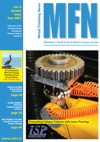E-Archive
Science Update
in Vol. 8 - January Issue - Year 2007
Applications for Blasting with Solid Carbon Dioxide

Figure. 1: Surface roughness versus blasting time of AlMg3 samples




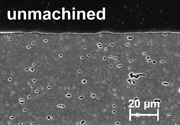



Figure 2: Surface topographies and outer surfaces of AlMg3 samples after dry ice blasting with different blasting times
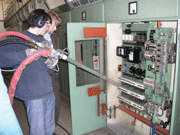
Figure 3: Dry ice cleaning of a control panel in a 36 kV substation
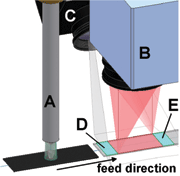
Figure 4: Preliminary dry ice blasting and final laser cleaning

Figure 5: Laser assisted dry ice blasting
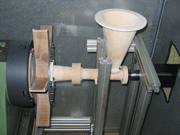
Fig. 6: Prototype of a centrifugal wheel blasting system for the mechanical acceleration of dry ice pellets
In the September issue dry ice blasting and CO2-snow blasting as highly flexible and environmentally friendly alternatives for established cleaning technologies were introduced. Their key advantages are their ability to clean sensitive surfaces and the fact that there are no residues of the blasting medium after the blasting process. The comparably low hardness of solid carbon dioxide allows the usage on a wide spectrum of materials. Due to the sublimation of the blasting medium only the removed contaminations have to be disposed.
Developed already in the 60’s the industrial dissemination of dry ice blasting started in the 90’s. Today the range of application is very wide. Common is the cleaning of tire moulds where residues of rubber have to be removed from time to time. With dry ice, the hot mould can be cleaned without damage of the surface. Other examples are the cleaning of machines and production lines without disassembling them or the removal of asbestos where the sublimation of the blasting media reduces the amount of hazardous waste considerably.
The Institute for Machine Tools and Factory Management of the Technical University Berlin (IWF) and the Fraunhofer-Institute for Production Systems and Design Technology (IPK) are working together on the field of blasting with solid carbon dioxide, starting with fundamental research till the development of new equipment. In the following the latest research projects will be presented.
Surface Pre-Treatment
For an optimal adhesion of adhesives with metal and plastic components, how they are used for example in the automobile industry, a chemical activation and a mechanical and physical modification of the surfaces is necessary. By dry ice blasting contaminations, protective films and oxide layers can be removed. In addition, depending on the hardness of the material to be treated, it is possible to roughen and to activate the surface.
In the context of an experimental study dry ice blasting for surface pre-treatment was examined [1, 2]. As results, defined surface roughness and topographies with undercut, small hollows and impact crater can be adjusted by dry ice blasting (figure 1 and 2). Furthermore through dry ice blasting corrosion layers and contaminations can be removed. A technological database for the pre-treatment of several metallic and plastic materials by dry ice blasting was elaborated. The database covers the connections between the adjusting parameters feed speed vf, working distance a, blasting angle ?, blasting pressure ps, blasting time ts and mass flow m of dry ice as well as the surface and outer zone characteristics. In the case of surface and outer zone characteristics roughness, specific surface, topography, outer zone, residual stress, plastic yield, chemical composition and surface tension were investigated.
Cleaning Control and Power
Electronics without Downtime
The servicing and maintenance of production lines cost time and money. Especially the cleaning of control and power electronics requires a shut-down of machines or entire production areas. A possibility to avoid losses of production is dry ice blasting. Dry ice is not inflammable, chemically inert, non toxic and electrical nonconductive and in principle applicable for life cleaning of electronic machine components. However, because of the low temperature of the blasting media, there is the danger that ambient humidity will condense on these components and may cause a flashover. The same can happen on the blasting nozzle as well, even when it is made of insulating material. Furthermore, usual blasting nozzles are not suitable for the wide range of materials in electrical systems.
In collaboration with the IPK and the Brandenburg Technical University Cottbus the IWF has developed a cleaning device based on dry ice blasting that allows live maintenance of production lines without any danger to men or machine [3]. The voltage level can range from low voltage in micro electronics to 30,000 Volts in power electronics. Figure 3 shows the cleaning of a control panel in a 36 kV substation with a prototype of the new cleaning device.
Increasing Performance by Hybrid Application
With regard to highly adhering or hard contaminations and protective or functional coatings dry ice blasting has economical and technological limitations. A possibility to increase the performance of dry ice blasting is its hybrid application with laser. As dry ice blasting, laser processing is an innovative and environmental friendly technology without additional residues of blasting media [4].
The hybrid combination of both technologies offers different strategies for machining: A focused laser application can be used as final cleaning process after preliminary dry ice blasting. This allows a defined surface structuring, roughening or smoothing. Furthermore the laser can be applied de-focused serving as an energy source to intensify the thermal mechanism of dry ice blasting. Both technologies can be applied in the same focal point or in two different focal points.
When applied as a final cleaning process the laser process should be concentrated onto the residues of preliminary cleaning by dry ice blasting, figure 4. This will increase the efficiency and reduce the stress of the substrate’s already cleaned surface. Therefore dry ice blasting (A) and laser processing with a 2D-scanning system (B) are applied consecutively in two different focal points and any interaction is avoided. As shown a digital camera (C) can be used as a sensor to identify the residues (D) as well as to perform a final quality check (E).
A de-focused laser application (B), figure 5, is used to prevent a cooling down of the workpiece by dry ice blasting (A) or even to raise the temperature. This increases the thermal shock when the dry ice particles hit the surface and improves the efficiency. Therefore the wavelength has to be chosen according to the absorption by the surface of the substrate. As shown, both technologies are applied in the same focal point. Furthermore the surface temperature of the substrate will be checked continuously by a thermal camera (C) to avoid thermal stress.
Compared to the stand-alone-technologies the hybrid machine concept offers a significant improvement. Laser assisted dry ice blasting tests with several standard specimen showed an improvement of the material removal rate of up to 600% [5]. Besides the final laser cleaning concept enables the hybrid technology to remove chemically modified substrate material. Thus the technological and economic limits of the stand-alone-technologies are exceeded.
Substitution of Compressed Air - Centrifugal Wheel Blasting
The energy efficiency of blasting technologies with compressed air is very low. An alternative for the acceleration of the blasting media are centrifugal wheels. Till now, centrifugal wheel blasting only works with durable blasting media like metals or plastics. But compared to compressed air blasting the centrifugal wheel blasting has the following advantages:
|
-high area related performance due to a high mass flow rate |
|
-low investment costs as there is no need of systems to generate and pre-process compressed air |
|
-high energy efficiency factor by direct transformation of electricity in mechanical energy (compressed air blasting 2% to 3%, centrifugal wheel blasting 80% to 90%) |
|
-easier to automate |
The IWF developed and patented in cooperation with the IPK a new centrifugal wheel blasting system for mechanical acceleration of dry ice pellets [6]. The challenge was to reduce the mechanical stresses on the sensible blasting medium which causes early sublimation. The mechanical stresses are caused by the pellet impact on the blades while feeding, by the pellet downforce on the blades surface and by frictions between pellets and blade surface. The new centrifugal wheel blasting system consists of a supply unit, acceleration bushing, blade and holder, figure 6. The pellets supply is carried out by screw-conveyer of adjustable rotation speed. The acceleration bushing is used to speed up the blasting media to the speed of the inner blade edge to reduce mechanical loads when feeding the blades. On the blades the blasting media is accelerated to final speed. All the components of the prototype were manufactured by the rapid prototyping process Selective Laser Sintering (SLS). With this manufacturing process it was possible to produce complex geometries, which are necessary to reduce the mechanical stresses on the blasting medium. As results of high speed video observations, nearly unbroken pellets could be observed. Thereby a final speed of 62 m/s was achieved. In further prototype studies new components to achieve higher pellets speeds by increasing the rotation velocity and the blades length will be designed. The modification of the blades geometry, material and surface roughness is also planed. Fine comparative studies with compressed air dry ice blasting will be carried out.
Reference
[1] Uhlmann, E.; El Mernissi, A.; Ökoeffiziente Vorbehandlungsmethoden im technologischen Vergleich. In: Adhäsion Kleben&Dichten, No. 10 2005, p. 12-17.
[2] Uhlmann, E., El Mernissi, A.; Hollan, R.: Was bringt das Trockeneisstrahlen? In: JOT Journal für Oberflächentechnik, No. 2 2006, p. 44-47.
[3] Uhlmann, E., Veit, R.: Dry Ice Blasting - Cleaning Control and Power Electronics without Downtime. Proceedings of the 4th International Conference on Manufacturing Research (IMCR2006) Liverpool John Moores University, UK, 5th - 7th September 2006, p. 267 - 272.
[4] Uhlmann, E., Hollan, R., El Mernissi, A., 2005, Hybrid Dry Ice Blasting-Laser Processing: Nd-YAG-Laser assisted Dry Ice Blasting for De-Coating, Proc. 8th International Conference on MIT’2005, p. 163-166.
[5] Uhlmann, E., Hollan, R., Veit, R., El Mernissi, A., 2006, A Laser Assisted Dry Ice Blasting Approach for Surface Cleaning, Proc. of the 13th CIRP International Conference on Life Cycle Engineering, Leuven/Belgium, p. 471-475.
[6] Uhlmann, E.; El Mernissi, A. Krieg, A.; Gottheil, I.: Schleuderradstrahlen mit Trockeneis. In: JOT Journal für Oberflächentechnik, No. 8 2006, p. 60-62.
For Information:
Institute for Machine Tools and Factory Management, Technical University Berlin, Germany
Tel. +49.30.314-22413, Fax +49.30.314-25895
E-mail: hollan@iwf.tu-berlin.de



